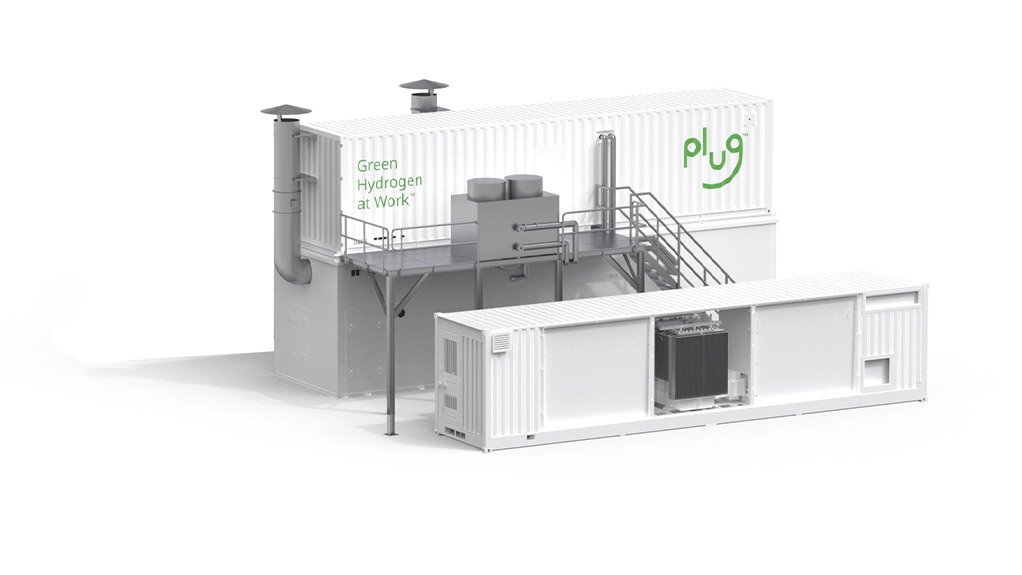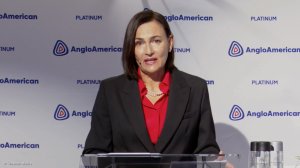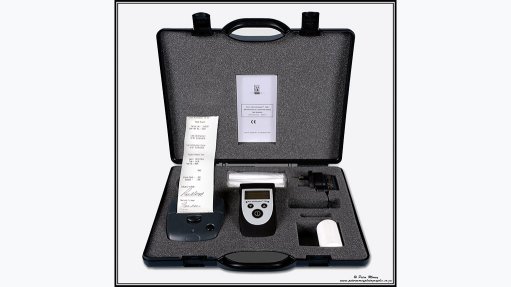Challenge of producing green hydrogen economically has been met – Natascha Viljoen



Outgoing Anglo American Platinum CEO Natascha Viljoen interviewed by Mining Weekly's Martin Creamer. Video: Dalene Creamer.
Plug Power CEO Andy Marsh.
Plug Power's green hydrogen electrolyser system.
JOHANNESBURG (miningweekly.com) – The challenge of producing green hydrogen economically is now done and dusted.
“That box has been ticked,” Anglo American Platinum CEO Natascha Viljoen assured Mining Weekly in a Zoom interview. (Also watch attached Creamer Media video.)
“With measures like the Inflation Reduction Act coming in from the US and with some of the Euro environmental support, we’ve seen that the debate around our ability to produce green hydrogen economically has broadly gone away,” says Viljoen.
The conversation is now around infrastructure and end-use development amid the required technologies for green hydrogen generation and hydrogen-powered fuel cell electric vehicles (FCEVs) being there for the taking to protect Mother Earth from climate catastrophe.
On the FCEV front, there are more than 400 light vehicle models on the market, “so there’s definitely end-use availability as we speak today”, says Viljoen.
Much now centres on how the system is set up and, in that system, an outpouring of capital commitment has already taken place globally, with many projects going through the final stage of approval.
“Momentum in the hydrogen economy has been kickstarted and is really going at pace,” Viljoen points out.
For current platinum group metals (PGMs) demand to be matched, all that is needed, she adds, is for 10% of the car park to be made up of FCEVs.
Whatever the market brings, and however the PGMs industry develops the market, Viljoen is confident that the Anglo Platinum she is leaving will be able to play a role in creating a cleaner and a greener future.
Mining Weekly: What can be done to ensure greater appreciation of the benefits that PGM-using proton exchange membrane, or PEM electrolysis, to help PEM technology to gain a bigger share of the green hydrogen electrolysis market?
Viljoen: The benefit of PEM when compared with alkaline electrolysis is because of the PGM component in PEM electrolysis. Because of the catalytic characteristics of PGM metals, the process stabilises faster at start-up, and then the efficiency of the process throughout is much higher than in alkaline electrolysis. When you think specifically of PEM matching renewables, and we all know that renewables are cyclic, that is where PEM plays a very specific role and where the efficiency of PEM electrolysis totally surpasses alkaline electrolysis, specifically in the application around renewable energy, which is required for green hydrogen production.
Mining Weekly is of the view that far more momentum needs to be given to the South African government-led Hydrogen Valley project and Project Rainbow, which contain a number of multi-partner platinum-using fuel cell electric vehicle opportunities and green hydrogen generation projects. How can this be done?
A couple of things are at work together here. For starters, ourselves and Sasol are part of the global Hydrogen Council and in that council, there’s a big advocacy drive, along with helping to shape policy and standards around safety, infrastructure and end-use. A big portion of this is how we make this Hydrogen Council material available and get it incorporated into the way that we think strategically and also systemically around how we set up South Africa for hydrogen. The second need includes finding the right level of investment to get the Hydrogen Valley project going, because it can showcase hydrogen end-use. The last is to recognise ourselves as being uppermost in three items. The one is the technology that Sasol has. It is unique technology that belongs to South Africa for hydrogen production. Secondly, we've got the biggest resource of PGMs in the world, and we need to work out how we use that to strategic advantage. Then lastly, a focus is needed on how we use the enormous renewables potential that we have as a country. I know that’s a little bit further out, and it feels a little bit far-fetched, but the reality is that we are one of only five countries that have enough renewable yield to export renewable energy in the form of hydrogen, because that is a meaningful way of transporting energy. In those components, continuous work with government and all our government stakeholders is needed to bring these projects to life, to bring policy and regulation into South Africa that makes this more and more possible, and then to find investments to bring these projects to the fore.
It is estimated that about 14 000 jobs a year can arise from the Hydrogen Valley. Do you think it is a credible figure?
it is a credible figure and that is just around the Hydrogen Valley. If you consider the follow-on benefits of renewables bringing energy security to the country, and that energy security bringing in more investments, the real big picture of this is how you unlock a broader economy.
Do you think that top level and medium level people are realising this in South Africa, or is there insufficient focus being placed on this?
I think there's a balanced focus on it. Our Minister of Mineral Resources and Energy is pushing for a Just Energy Transition, which for us as a country is right. We need to consider what our people need, we need to consider what our country needs in the very near term. What we shouldn't lose focus on is how we take the next step and how we surpass into a bigger future. We need to get through the near term and fully support it in a way that is just. But that's also where we need to think about how we use the resources available to us to leverage other investment into our country, into our renewables, into our PGM resources, into the technologies that we have, because, as a country, we have a number of pieces that are important for the globe to unlock renewable energy and decarbonisation.
Germany has got a fuel cell electric vehicle taxi business going and South Africa has massive taxi fleets. Could we not apply what is being done in Germany here in South Africa?
Absolutely. The next phase of our market development work is certainly to see how do we adopt some of those use cases and to develop use cases for us here in South Africa. But the Hydrogen Valley, and that corridor, is part of the use case.
Has any construction work begun on the Hydrogen Valley at this stage, or is that still to come?
It's still to come. It's in project phase, but the feasibility is done, so it's ready for investment.
PEM IN AUSTRALIA
PEM electrolyser systems have been selected for green hydrogen projects in Tasmania, Australia. The 5 MW systems have been selected from Plug Power of the US by the green hydrogen project developer Countrywide Hydrogen, a wholly-owned subsidiary of the Australian Stock Exchange-listed ReNu Energy.
The electrolyser systems will be installed at planned production facilities in Brighton, near Hobart, and Western Junction, near Launceston.
The 4 200 kg of hydrogen produced at these two sites daily will be used to decarbonise road transport and natural gas sectors in Tasmania.
“The plants are strategically located to leverage existing infrastructure, and our PEM electrolyser systems are a perfect complement to the plant designs,” Plug CEO Andy Marsh stated in a release to Mining Weekly.
The hydrogen will be produced through electrolysis with renewable power planned to be initially sourced from the state grid, with subsequent supply from behind-the-meter solar and power purchase agreements from wind, solar and hydropower operators. The water will be supplied from TasWater’s network.
The design includes a second electrolyser at each site to meet increased hydrogen demand. It ensures a secure supply by implementing electrolyser redundancy and use of tube trailers for hydrogen storage. The storage system ensures that the sites can support one another in the event of unexpected outages. The sites will include connections to the TasGas network, allowing injection of hydrogen into the network as well as supply to local industry.
PEM IN AMERICA
The US Department of Defense has granted Nel Hydrogen $5.6-million in funding for a project aimed at accelerating advanced electrolyser stack development to enable low-cost hydrogen storage and resiliency.
The 19-month project is poised to advance PEM electrolyser development to reduce capital and operating costs.
The project is being conducted in collaboration with the Engineer Research and Development Center-Construction Engineering Research Laboratory (ERDC-CERL).
Activities include the optimisation of membranes for electrolysis applications, development of advanced catalysts, surface coating techniques to reduce precious metal usage, and cell stack integration and testing in a full system at ERDC-CERL. The project also has options for additional funding.
Nel VP Research and Development Kathy Ayers described the project as being an important enabler for renewable hydrogen generation at scale for industrial applications using PEM technology.
ERDC-CERL senior researcher energy branch Nicholas Josefik described hydrogen generation as a unique energy source that can be used to support national energy security and resiliency.
Nel Hydrogen, a subsidiary of Oslo-based Nel ASA, is a global, dedicated hydrogen company, delivering optimal solutions to produce, store and distribute hydrogen from renewable energy.
ERDC, a diverse engineering and scientific research organisations, has seven laboratories in four states with more than 2 100 employees to administer an annual research programme exceeding $1-billion.
Article Enquiry
Email Article
Save Article
Feedback
To advertise email advertising@creamermedia.co.za or click here
Press Office
Announcements
What's On
Subscribe to improve your user experience...
Option 1 (equivalent of R125 a month):
Receive a weekly copy of Creamer Media's Engineering News & Mining Weekly magazine
(print copy for those in South Africa and e-magazine for those outside of South Africa)
Receive daily email newsletters
Access to full search results
Access archive of magazine back copies
Access to Projects in Progress
Access to ONE Research Report of your choice in PDF format
Option 2 (equivalent of R375 a month):
All benefits from Option 1
PLUS
Access to Creamer Media's Research Channel Africa for ALL Research Reports, in PDF format, on various industrial and mining sectors
including Electricity; Water; Energy Transition; Hydrogen; Roads, Rail and Ports; Coal; Gold; Platinum; Battery Metals; etc.
Already a subscriber?
Forgotten your password?
Receive weekly copy of Creamer Media's Engineering News & Mining Weekly magazine (print copy for those in South Africa and e-magazine for those outside of South Africa)
➕
Recieve daily email newsletters
➕
Access to full search results
➕
Access archive of magazine back copies
➕
Access to Projects in Progress
➕
Access to ONE Research Report of your choice in PDF format
RESEARCH CHANNEL AFRICA
R4500 (equivalent of R375 a month)
SUBSCRIBEAll benefits from Option 1
➕
Access to Creamer Media's Research Channel Africa for ALL Research Reports on various industrial and mining sectors, in PDF format, including on:
Electricity
➕
Water
➕
Energy Transition
➕
Hydrogen
➕
Roads, Rail and Ports
➕
Coal
➕
Gold
➕
Platinum
➕
Battery Metals
➕
etc.
Receive all benefits from Option 1 or Option 2 delivered to numerous people at your company
➕
Multiple User names and Passwords for simultaneous log-ins
➕
Intranet integration access to all in your organisation

















